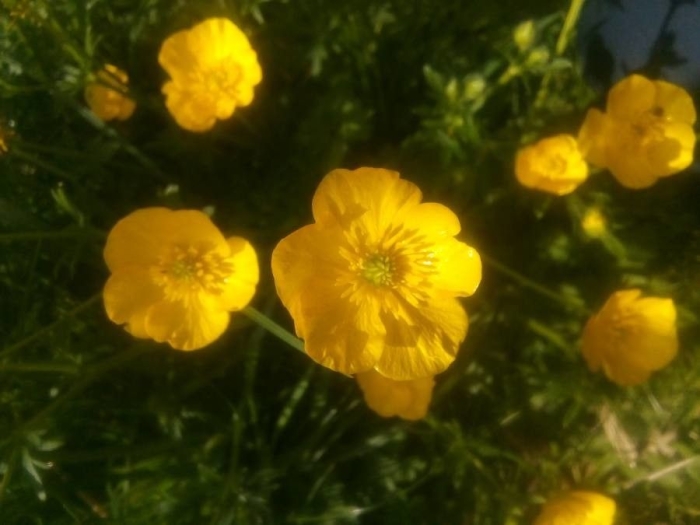Tall Buttercup
(Ranunculus acris)
Tall Buttercup (Ranunculus acris)
/
/

Daniel Mizrahi
CC BY-SA 4.0


















































Estimated Native Range
Summary
Tall Buttercup is valued for its vibrant yellow flowers that can add color to wildflower meadows and informal garden settings. It is often found in moist, nutrient-rich soils and prefers full sun but can tolerate partial shade. While it can be a charming addition to certain garden styles, it is also known to be aggressive in some conditions, spreading rapidly and potentially becoming a weed in lawns and cultivated beds. The double-flowered cultivar ’Flore Pleno’ has been awarded the Royal Horticultural Society’s Award of Garden Merit, indicating its particular value in ornamental horticulture. Gardeners should be cautious with water management to prevent excessive spread and monitor for potential invasiveness, especially in North America where it is considered invasive in some regions.CC BY-SA 4.0
Plant Description
- Plant Type: Herb
- Height: 1-2 feet
- Width: 1-2 feet
- Growth Rate: Moderate
- Flower Color: Yellow
- Flowering Season: Spring, Summer
- Leaf Retention: Deciduous
Growth Requirements
- Sun: Full Sun
- Water: High
- Drainage: Slow, Medium
Common Uses
Bee Garden, Bird Garden, Butterfly Garden, Deer Resistant, Erosion Control, Low Maintenance, Showy Flowers, Water Garden
Natural Habitat
native to a variety of habitats including meadows, pastures, and the edges of streams and rivers in Europe and Western Russia
Other Names
Common Names: Common Buttercup, Meadow Buttercup, Giant Buttercup, Tall Crowfoot, Tall Field Buttercup, Bidende Ranunkel, Scharfer Hahnenfuss, Niittyleinikki, Bouton D’Or, Renoncule Âcre
Scientific Names: , Ranunculus acris, Ranunculus acer, Ranunculus acris var. acris, Ranunculus kerneri, Ranunculus acris var. latisectus, Ranunculus acris var. multifidus, Ranunculus acris var. lanuginosus, Ranunculus acris f. multiplicipetalus, Ranunculus intercedens
GBIF Accepted Name: Ranunculus acris L.